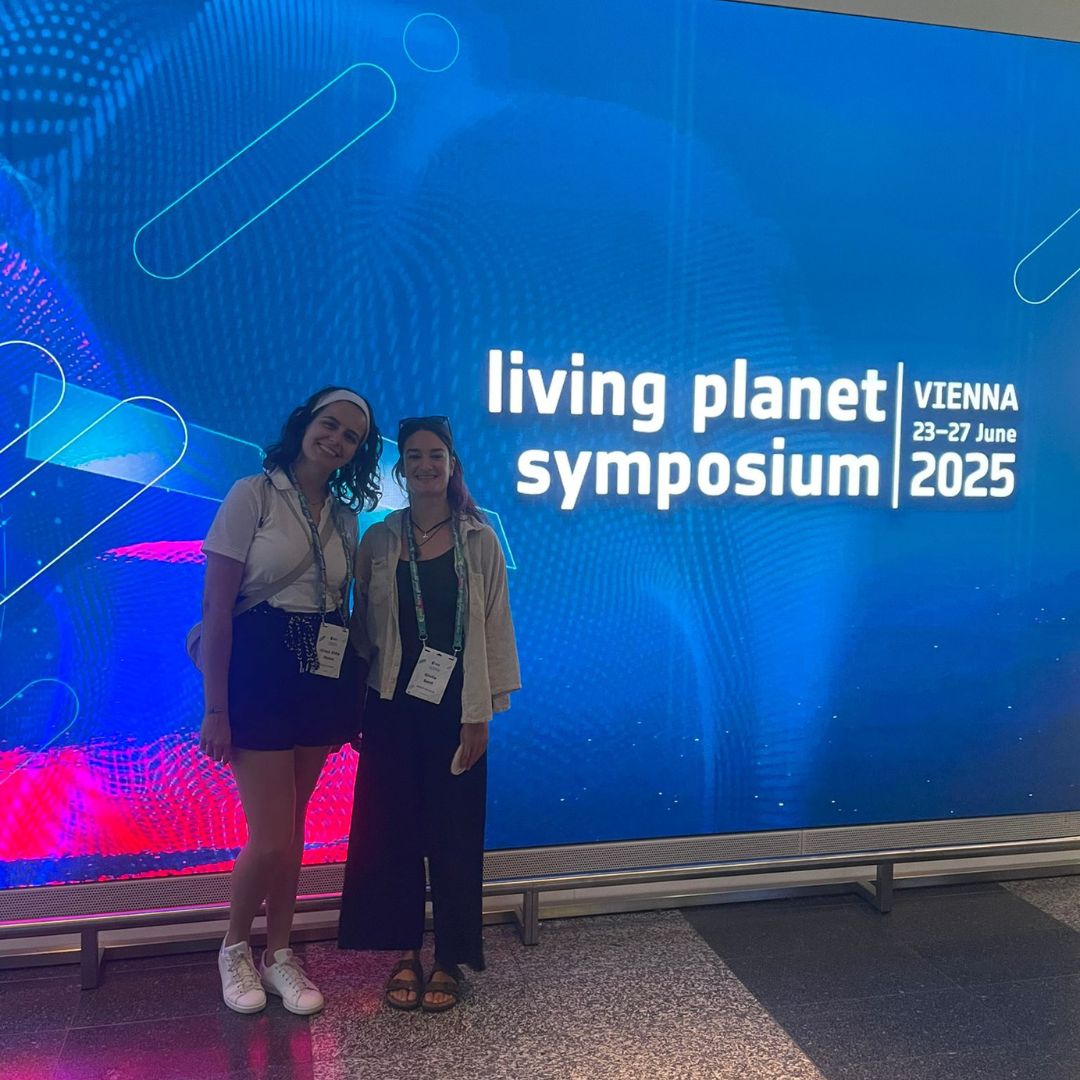MARE brings the ocean to Europe's largest Earth observation stage
Between 23 and 27 June, more than 6,500 participants from almost 120 countries gathered in Vienna for the Living Planet Symposium 2025, the largest European meeting dedicated to Earth observation, promoted by the European Space Agency (ESA). Among researchers from all over the world, three MARE/ARNET researchers from the Faculty of Sciences of the University of Lisbon were present: Vanda Brotas, Giulia Sent and Graça Sofia Nunes.
The three researchers brought to the conference different ways of looking at the ocean from space, from Antarctica to Portuguese estuaries, via the classroom, books and even theatre.
Professor Vanda Brotas presented an innovative science communication project that uses the power of storytelling to arouse children's interest in the ocean and satellite observation of the Earth. The story begins with an illustrated book, The Girl Who Saw the Sea in Different Colours, which presents, through fantasy, the concept of ‘ocean colour’, an essential variable in the study of climate. The protagonist sees what nobody else sees: colourful patterns in the sea, caused by microscopic phytoplankton. As the story progresses, the reader is guided through scientific concepts adapted to school age, such as the relationship between phytoplankton and fishing, or the importance of combining satellite data with measurements at sea.
The book was included in the National Reading Plan and reached schools across the country through visits involving games with coloured sheets to simulate the ocean's colour gradients. Later, the story was adapted for the theatre, with shows that end with questions to the audience, promoting dialogue and curiosity. The English version, available free online, can be read here.
Graça Sofia Nunes shared her master's work on the dynamics of phytoplankton in the Ross Sea in Antarctica. Using 25 years of satellite data and ocean modelling, she analysed bloom patterns in different areas of this remote and climate-sensitive ecosystem. The results show how ice, wind and currents shape biological productivity over time.
Giulia Sent presented a study developed as part of her PhD, which used eight years of satellite images to investigate the dynamics of water quality in the Tagus Estuary. By classifying ‘optical water types’, she was able to identify patterns associated with the tides, opening up new possibilities for monitoring coastal areas with high variability.
In addition to the scientific presentations, the conference offered moments for exchanging experiences, new collaborations and a strong commitment to the sustainability of the event. One thing was clear: looking at the Earth from space is essential to understanding the ocean and preparing for the future.
Text by Vera Sequeira
